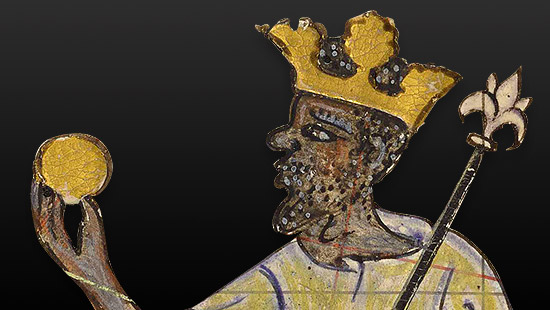The “Caravans of Gold” exhibition includes an unprecedented number of loans from the national collections of Mali, Morocco and Nigeria, never before seen in the United States, including from Mali irreplaceable terracotta sculptures, manuscripts and the delicate remains of woven indigo-dyed cloth from the medieval period that are among Africa’s oldest surviving textiles. From Nigeria come sculptures in bronze and terracotta, some dating to the 9th century. And from Morocco there are gold coins, glazed ceramics and carved stucco architectural embellishments.
Works that illuminate the play of borders and territories hold a central role in the exhibition. The terracotta figures from the Bankoni Region of Mali, on loan from the Art Institute of Chicago, are self-representations of people involved in trans-Saharan trade. A richly hued 14th-century Italian painting of the crucifixion covered with gold leaf, on loan from the Walters Art Museum in Baltimore, is one example of the many treasures on view from the Western canon. In the context of the exhibition, the work — embellished with gold that likely was transported along Saharan caravan routes — takes on an entirely new dimension.
Central to “Caravans of Gold” is the innovative use of precious archeological fragments, some minute in size, in the form of broken pieces of glazed and unglazed pottery, colored shards of glass vessels, copper and iron work, glass and semi-precious stone beads, and extremely rare wisps of textiles, that together animate the imagination.
“The Block Museum of Art is committed to telling stories that expand and challenge mainstream art histories,” noted Corrin. “'Caravans of Gold' is an exhibition that exemplifies this commitment and celebrates Northwestern's unique strengths in championing innovative research, fostering interdisciplinary connections and cultivating global perspective. A network of institutional and international partnerships allows the museum to serve as the connecting hub for a project that spans continents and millennia.”
A forthcoming companion book of essays, co-published by the Block Museum of Art and Princeton University Press, will expand the focus of the project and is designed to serve as a significant new resource on the subject, based on the most up-to-date research across fields of study.




